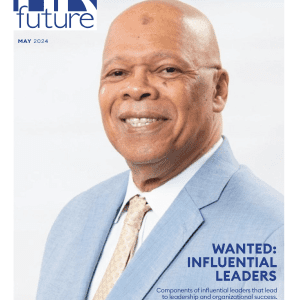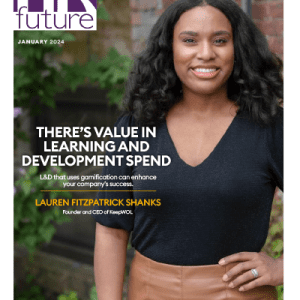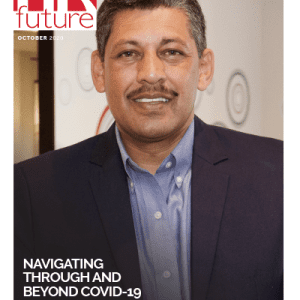Managers find themselves leading multi-generational and multi-cultural workforce teams, with people scattered across the world, demanding loads of agility and flexibility in how they approach different situations. This constant state of flux demands adaptation of our behaviour and our responses to different situations, and it means learning new skills as well as being open to learning through other people, in both formal and informal environments and channels. All these elements, and more, form part of what is known as ‘Learning Agility’.
Our ability to adapt and find the right capabilities to manage change and innovation in the Brittle-Anxious-Non-Linear-Incomprehensible (BANI) world of the future is heavily reliant on our learning agility. It is fundamental to our own success, and that of the teams and people that we lead. Leaders need to be more agile than ever before. As employees move up the career and corporate ladder, ambiguity and uncertainty in their environment increases massively, and this is where learning agility becomes crucial.
Developing and nurturing ‘learning agility’ is just one of 15 critical future fit skills that the Future Fit Academy has defined as critical to being relevant and competent, if not advanced, in the future of work. These 15 skills are pivotal to every employer, employee, student, leader or entrepreneur – for businesses to develop human capital ‘muscle’ to strengthen companies for future disruptions, and for individuals to remain relevant and engaged in a world where the pace of change in work demands and skills required is exponential.
What is Learning Agility?
Learning Agility is the willingness and ability to learn from experience, and subsequently apply that learning to perform successfully under new or first-time conditions. It’s about ‘knowing what to do when you do not know what to do’. It’s about having the ability to rapidly learn, unlearn, and relearn mental models and practices from a variety of experiences, people, and sources, and to then apply that learning in new and changing contexts to achieve desired results.
Learning Agility consists of four domains and one underlying factor, namely self-awareness. These are:
- Mental agility: penetrating complex problems by critical thought and expanding the possibilities by making fresh connections.
- People agility: being able to harness and multiply collective performance by understanding and relating to other people and the challenge of tough situations.
- Change agility: being curious, dealing effectively with the uneasiness created by change and enjoying experimentation.
- Results agility: inspiring teams to deliver excellent results in unique situations and building confidence in others by demonstrating a personal ‘presence’.
- Self-awareness: being thoughtful, understanding one’s own capabilities and their impact on others.
Why is Learning Agility important?
The reality is that skill obsolescence is something we will all experience, however the pandemic and its after-effect has expedited the pace at which some skills become out of date, or obsolete, by more than 70 percent according to NewsWeek. This then means that to ensure that we do not become redundant, we need to commit ourselves to life-long learning. We simply cannot get too comfortable in our current roles – we must anticipate that the only constant is change, and the focus must be on expanding horizons and investing in learning new skills related to our roles. Learning agility is what allows us to make sense even in uncertain situations.
People with high scores on learning agility tend to learn quickly in unfamiliar situations, ask questions and desire feedback, are good at discovering patterns in an unfamiliar situation, seek out new challenges, and develop better tools and behaviours to deal with new challenges, in a shorter amount of time. Furthermore, in terms of business and leadership contexts, a study done by Korn Ferry Institute showed that learning agility is a top predictor of high potential and that companies with highly agile executives have 25% higher profit margins than their peer group. Individuals with high learning agility are also promoted twice as fast as individuals with low learning agility.
Key Practices to Build Learning Agility
As with all 15 of the future fit skills, Learning Agility can be learned and developed and is an ongoing process.
Agile learners are curious, they ask questions and challenge the status quo. In developing these skills, challenge yourself to not simply default to the same old ways of doing things, but actively seek out ways to do and learn better ways of behaving. They also accept that risk is a gateway to opportunity, even if it sometimes leads to failure. In developing this skill, take on a challenge that scares you – find something meaningful, but not so important that failure will have serious personal consequences. Tell others what you are doing and and ask for their help and support. Reflection is one of the most important aspects of learning agility as this is what enable one to process and learn from experience. Ask questions of yourself and others regarding the things you could have done differently and better. Find someone you trust to give you open and honest feedback and challenge that person to do so. Resist the temptation to explain your actions or make excuses and instead ask clarifying questions.
Finally, and most crucially, a key practice to develop learning agility is ‘learning to unLearn’ – letting go of outdated beliefs, assumptions and methods that are no longer appropriate. Be your own mental model’s biggest critic, looking for reasons to disprove assumptions and mental models, use the ‘inversion technique’ which means one always considers the ‘opposite’ option or perspectives and always raise awareness of your own biases and heuristics – these are mental shortcuts that can facilitate problem-solving and probability judgments. These strategies are generalizations, or rules-of-thumb and reduce cognitive load, and can be effective for making immediate judgments, but they often result in irrational or inaccurate conclusions by automatically defaulting to the ‘short-cut’. Learning or unlearn outdated practices and beliefs is an key aspect of developing your learning agility.
Dr Eric Albertini is from the Future Fit Academy.
References
Learning Agility: The New Requirement for Leadership Success. https://blog.lumenii.co.za
Tips for Improving Your Learning Agility. Center for Creative Leadership. https://www.ccl.org/articles/leading-effectively-articles/tips-for-improving-your-learning-agility/
The Organisational X-Factor: Learning Agility. Korn Ferry. https://focus.kornferry.com/leadership-and-talent/the-organisational-x-factor-learning-agility/
Three steps to become a better life-long learner. https://focus.kornferry.com/leadership-and-talent/learning-agility-3-steps-to-become-a-better-lifelong-learner/
The pace that skills will become obsolete. https://www.newsweek.com/2021/10/08/pandemic-has-sped-pace-that-some-work-skills-become-obsolete-70-percent-survey-finds-1628468.html
LEARNING AGILITY TEST https://www.kornferry.com/insights/this-week-in-leadership/burnison-learning-agility-test








